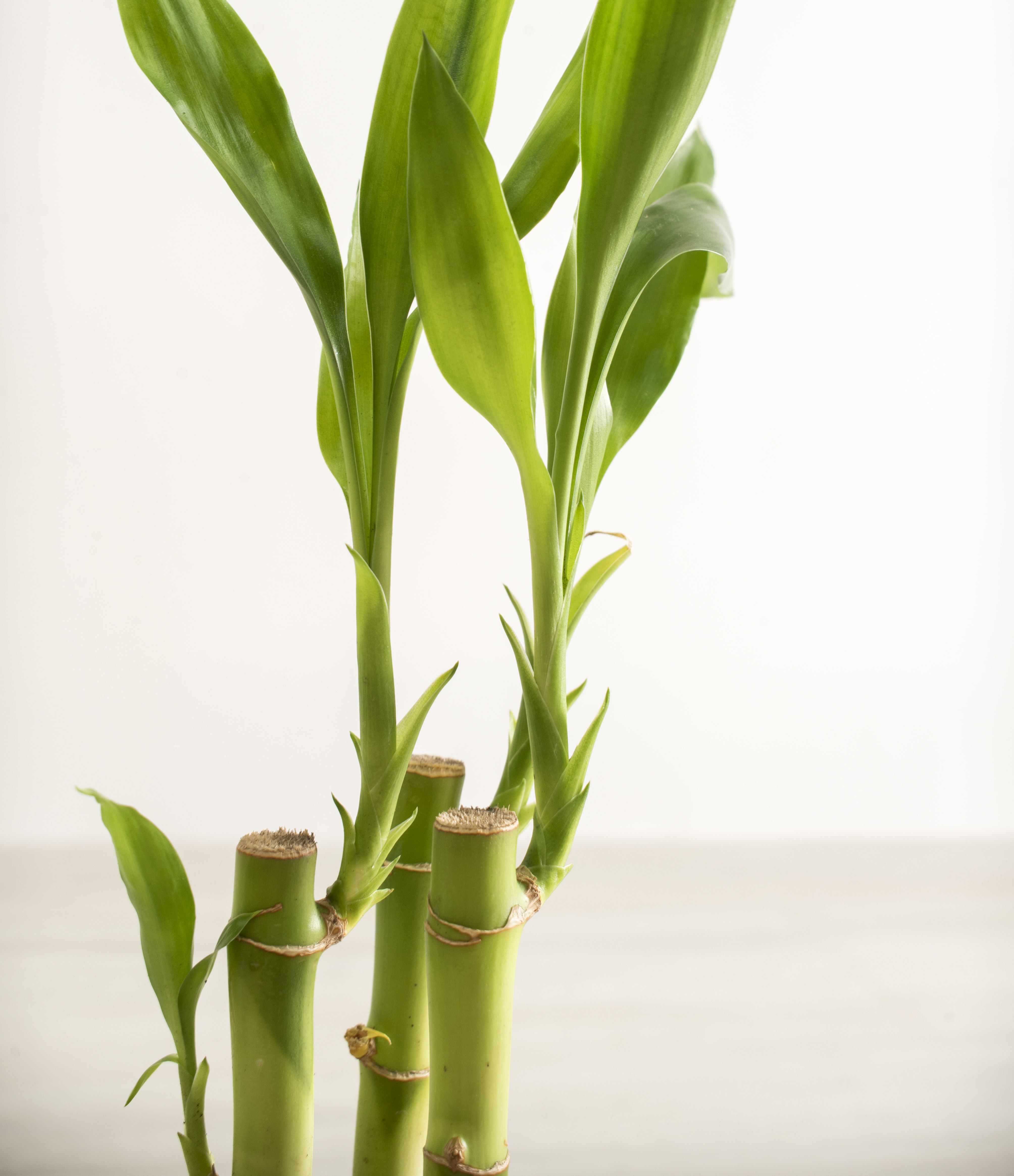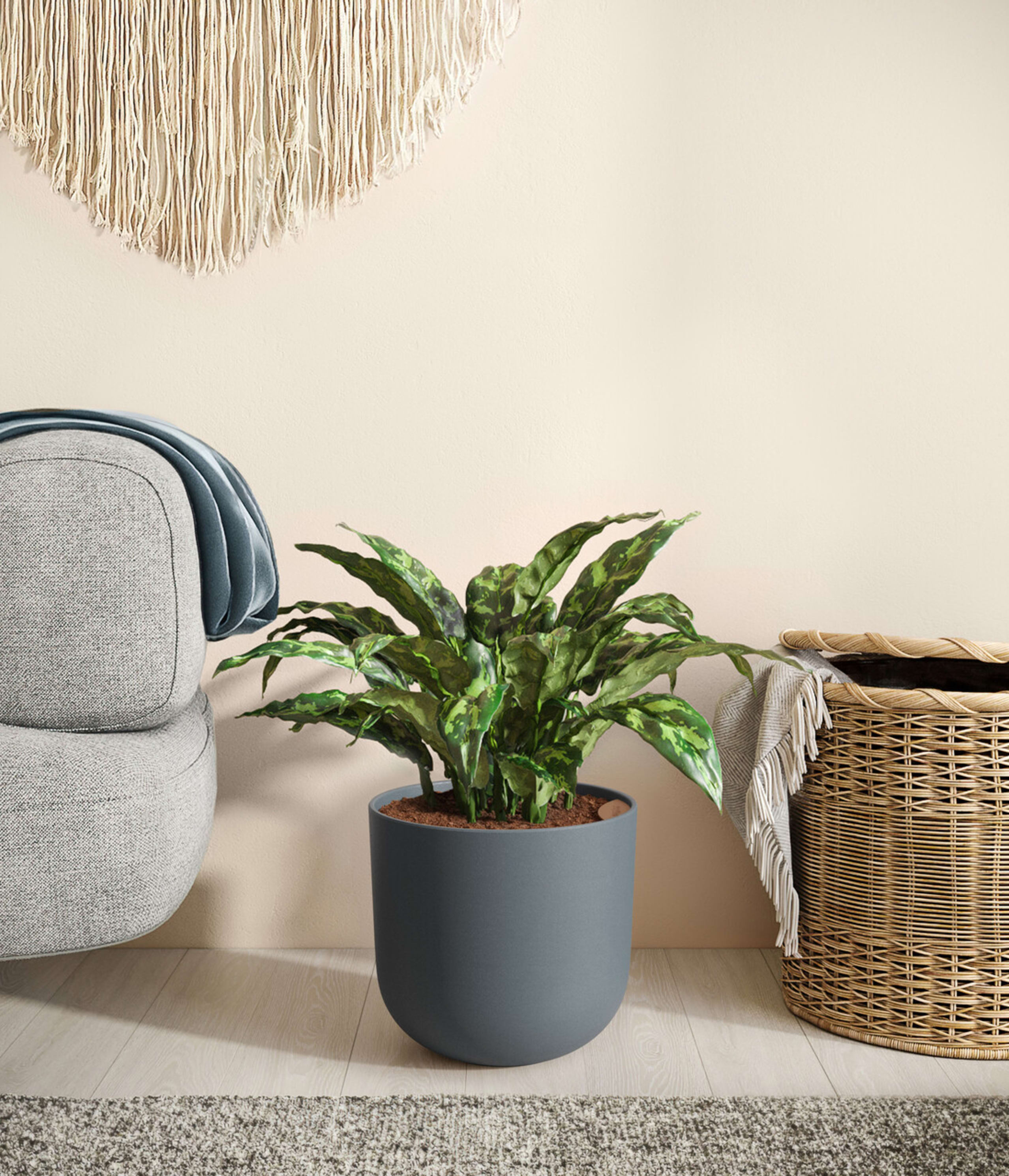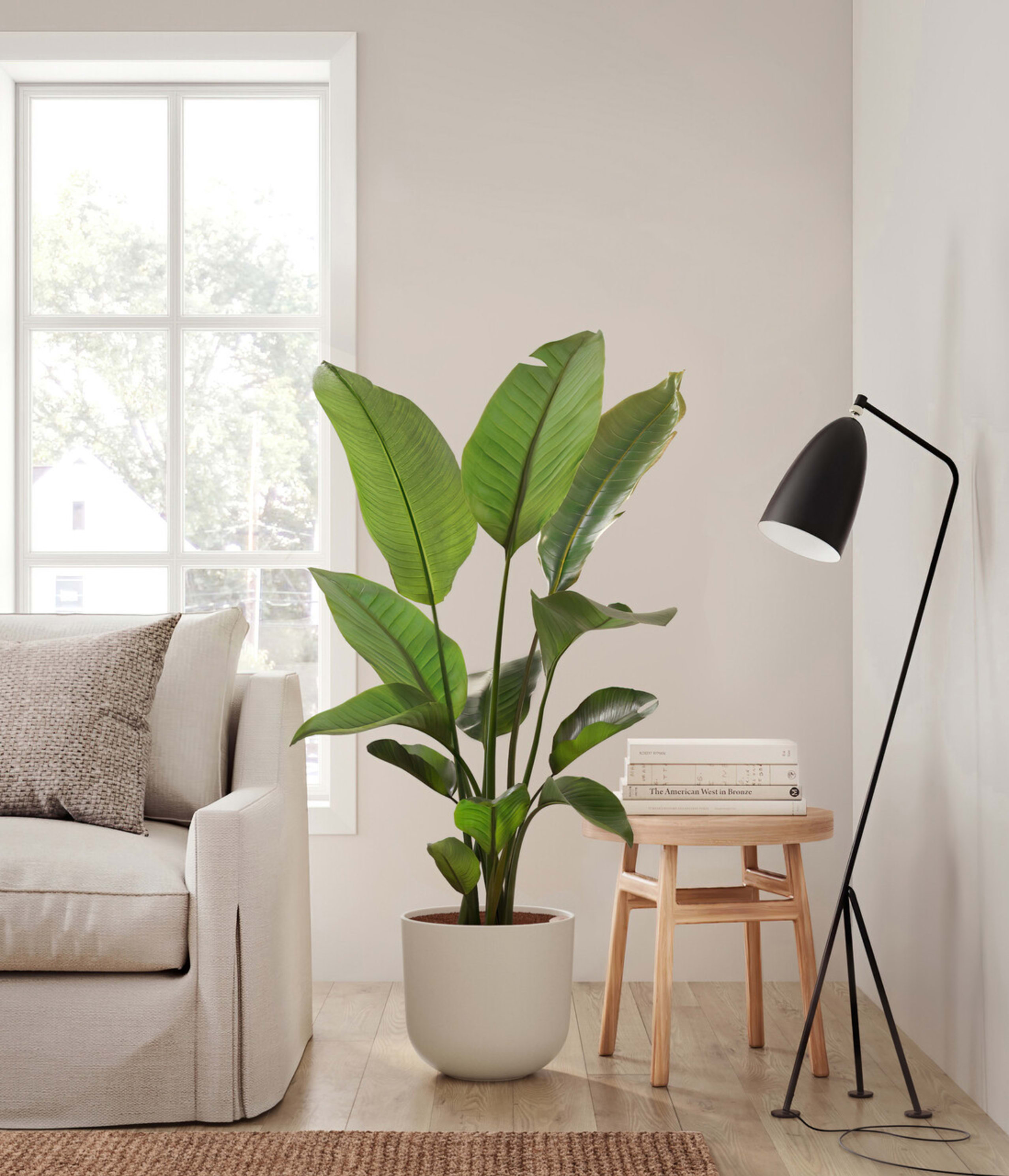About Lucky Bamboo
Lucky bamboo, a tropical evergreen native to central and west Africa, is a beloved plant for its ease of care and ability to bring a touch of greenery to any space. Though often mistaken for bamboo, it is actually a type of dracaena. With its lush leaves and hardy nature, lucky bamboo is a symbol of good luck and prosperity, making it a perfect gift for loved ones.
Lucky bamboo can be grown in water or soil and prefers bright, indirect light but can tolerate lower light conditions. To keep your lucky bamboo thriving, it is important to maintain stable water levels - if growing in water, it's best to change the water weekly to prevent any possible bacterial or fungal growth. If grown in soil, make sure to keep the soil moist but not waterlogged.
How Often Should I Water My Lucky Bamboo
With easyplant, growing a healthy Lucky Bamboo plant is simple. Make sure to check the easyplant reservoir once a month and fill it when empty, and you're all set!
Without an easyplant pot, it's important to be mindful of your watering habits to ensure that your Lucky Bamboo plant stays healthy and vibrant. To avoid overwatering your plant, check the water level in the container before adding more. As a low-maintenance plant, it's best to keep the water level consistent and avoid letting it dry out completely. The Lucky Bamboo plant can tolerate a wide range of water temperatures but prefers room temperature. In general, you can water your plant once a week, but you may need to adjust this schedule based on the season and the plant's location. In the summer, you may need to water your plant more frequently, while in the winter, you may need to reduce watering.
Lucky Bamboo Light Needs
Lucky Bamboo grows best in a well-lit space with bright direct or indirect sunlight and can adapt to spaces with medium to low light, where the source of light is further away. Avoid placing it in spaces without natural sunlight.
Lucky Bamboo Plant Care
To care for your lucky bamboo plant, it is important to maintain stable water levels and change the water weekly if grown in water. If grown in soil, keep the soil moist but not waterlogged. To help it grow optimally and evenly, occasionally dust the leaves and rotate the pot by a ¼ turn once a month. Prune any yellowing leaves or stems to encourage new growth. During the first few days after bringing your lucky bamboo plant home, it is normal for it to lose a leaf or two, this is simply part of the plant's adjustment process, and there is no need to be concerned. With proper care, your lucky bamboo plant will thrive and bring a touch of greenery to your space.
How Big Do Lucky Bamboo Plants Grow?
Lucky Bamboo plants are known for their small, compact size. They typically grow between 2-4 feet tall, although some varieties may reach up to 6 feet tall under optimal conditions. The size and number of stalks in a Lucky Bamboo plant can vary depending on the care and environment it is given. The more light it receives, the faster it will grow. In low light, the plant’s growth tends to slow down. Lucky Bamboo plants prefer bright, indirect light and high humidity. They can be grown in soil or water and are considered low-maintenance plants. Many people consider it a symbol of good luck and prosperity.
Temperature & Humidity
Lucky Bamboo is a popular indoor plant known for its low maintenance and unique appearance. These plants are native to tropical regions and thrive in warm and humid environments. To keep your Lucky Bamboo healthy and happy, maintain a temperature range of between 60°F to 90°F (15°C - 32°C) and high humidity levels. To increase humidity for your plant, placing it alongside other plants or using a pebble tray can be effective. You can also use a humidifier to create a more humid environment. Keep in mind that too much direct sunlight can dry out the plant, so make sure to place it in a spot with indirect or filtered light. Lucky Bamboo can also be placed in a bathroom or kitchen where there is naturally higher humidity.
Are Lucky Bamboo Toxic for Pets & Kids?
Dracaena sanderiana, commonly known as Lucky bamboo, is not considered pet-friendly. While it is generally safe for humans, it can pose a risk to animals. If ingested by pets, such as dogs or cats, it may cause gastrointestinal upset or mild skin irritations. Though the risk to humans is minimal, it’s still advisable to keep the plant out of reach of young children and pets that may be inclined to chew on its leaves. As a precaution, it's best to place the plant in an area where pets and children cannot easily access it.
Troubleshooting Common Problems with Lucky Bamboo
If you notice your Lucky Bamboo's leaves are turning yellow, it may be a sign of over-watering or poor water quality. Be sure to use filtered or distilled water for your plant, and let the soil dry out between watering. When you do water, be sure to moisten the soil thoroughly. If the leaves are drooping, it may be a sign of under-watering. Increase the watering frequency, and be sure to use filtered or distilled water. If you notice brown spots on the leaves, it may be a sign of poor water quality or a pest infestation. Keep an eye out for small insects, and consider using a natural pesticide.
It is also important to remember that Lucky bamboo plants prefer indirect sunlight and should be kept away from direct sunlight or drafts. They also like to be in a relatively humid environment; if you find yourself in a dry area, consider placing a humidifier nearby. With proper care and attention, your Lucky Bamboo plant will thrive and bring good luck to your home.
Frequently Asked Questions about Lucky Bamboo Plant
What is Lucky Bamboo plant good for?

Lucky Bamboo is known for its ability to bring feng shui, balance, and good fortune to any space. It's believed to enhance the flow of positive energy, making it a popular choice for both homes and offices.
Where should I put Lucky Bamboo in my house?

Lucky Bamboo thrives in indirect light, making it versatile for placement within your home. According to feng shui principles, placing it in the east part of your home is said to improve health and family happiness, while the southeast part is believed to attract wealth and prosperity.
How do you care for a Lucky Bamboo plant?

With an easyplant system, just refill the water monthly for optimal moisture. If not using an easyplant, keep the soil moist but not waterlogged, or if grown in water, change the water every 2-4 weeks. Lucky Bamboo prefers bright, indirect light.
Do lucky bamboo need sunlight?

Lucky Bamboo does not require direct sunlight and actually prefers to avoid it. It thrives best in bright, indirect light. Too much direct sunlight can harm the plant, causing the leaves to burn and turn yellow.

 Small Plants
Small Plants Medium Plants
Medium Plants Plants Collections
Plants Collections Large Plants
Large Plants Huge Plants
Huge Plants